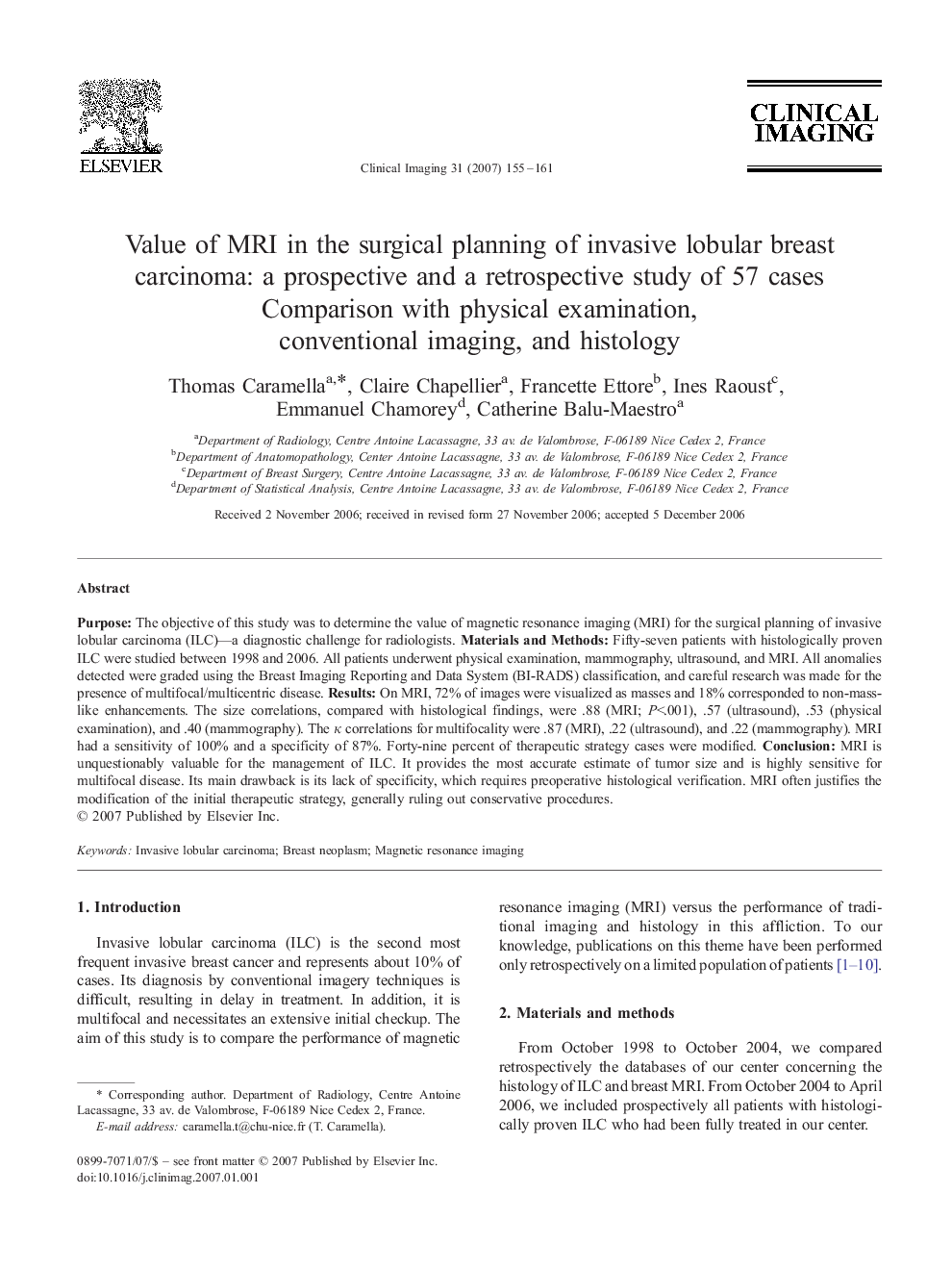| Article ID | Journal | Published Year | Pages | File Type |
|---|---|---|---|---|
| 4222829 | Clinical Imaging | 2007 | 7 Pages |
PurposeThe objective of this study was to determine the value of magnetic resonance imaging (MRI) for the surgical planning of invasive lobular carcinoma (ILC)—a diagnostic challenge for radiologists.Materials and MethodsFifty-seven patients with histologically proven ILC were studied between 1998 and 2006. All patients underwent physical examination, mammography, ultrasound, and MRI. All anomalies detected were graded using the Breast Imaging Reporting and Data System (BI-RADS) classification, and careful research was made for the presence of multifocal/multicentric disease.ResultsOn MRI, 72% of images were visualized as masses and 18% corresponded to non-mass-like enhancements. The size correlations, compared with histological findings, were .88 (MRI; P<.001), .57 (ultrasound), .53 (physical examination), and .40 (mammography). The κ correlations for multifocality were .87 (MRI), .22 (ultrasound), and .22 (mammography). MRI had a sensitivity of 100% and a specificity of 87%. Forty-nine percent of therapeutic strategy cases were modified.ConclusionMRI is unquestionably valuable for the management of ILC. It provides the most accurate estimate of tumor size and is highly sensitive for multifocal disease. Its main drawback is its lack of specificity, which requires preoperative histological verification. MRI often justifies the modification of the initial therapeutic strategy, generally ruling out conservative procedures.
